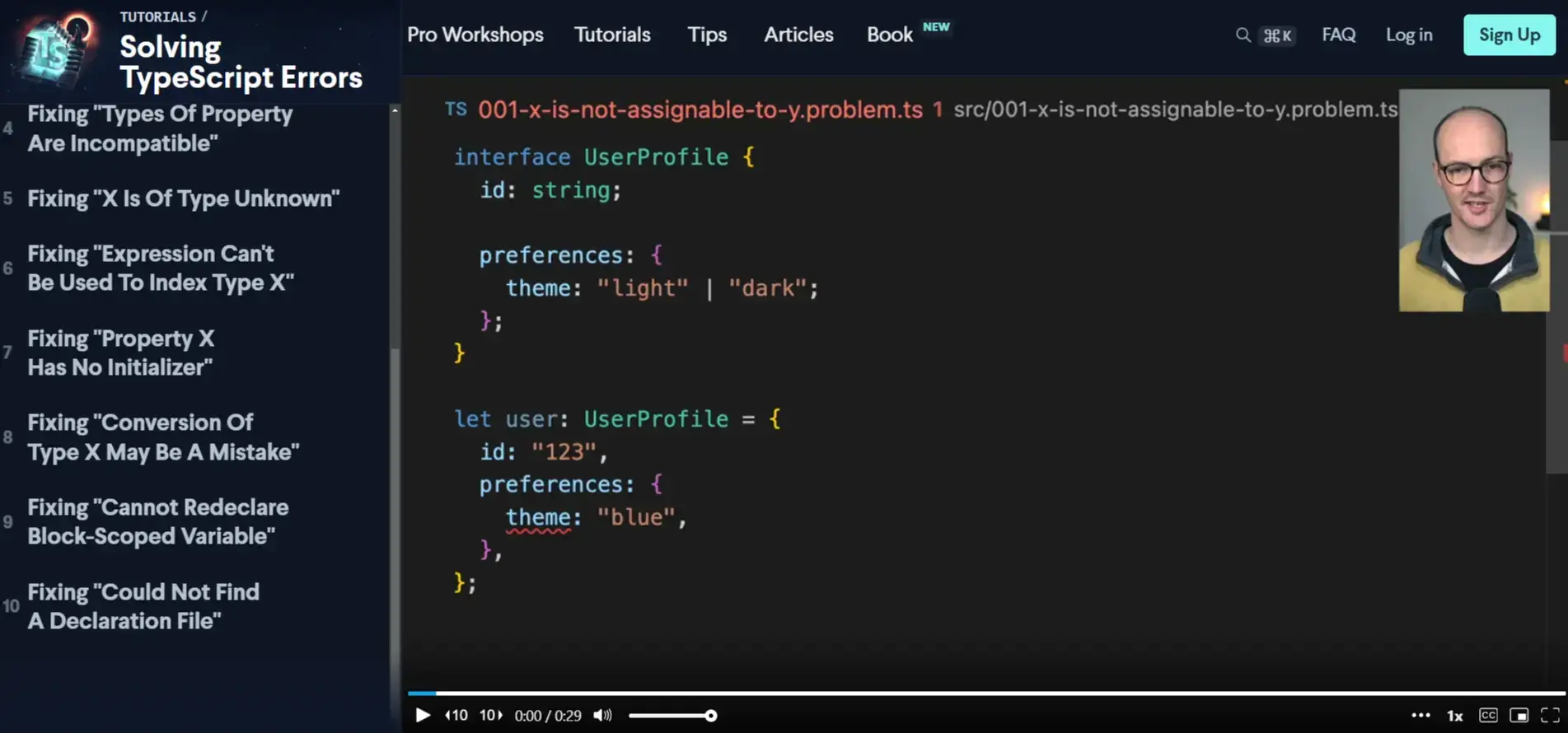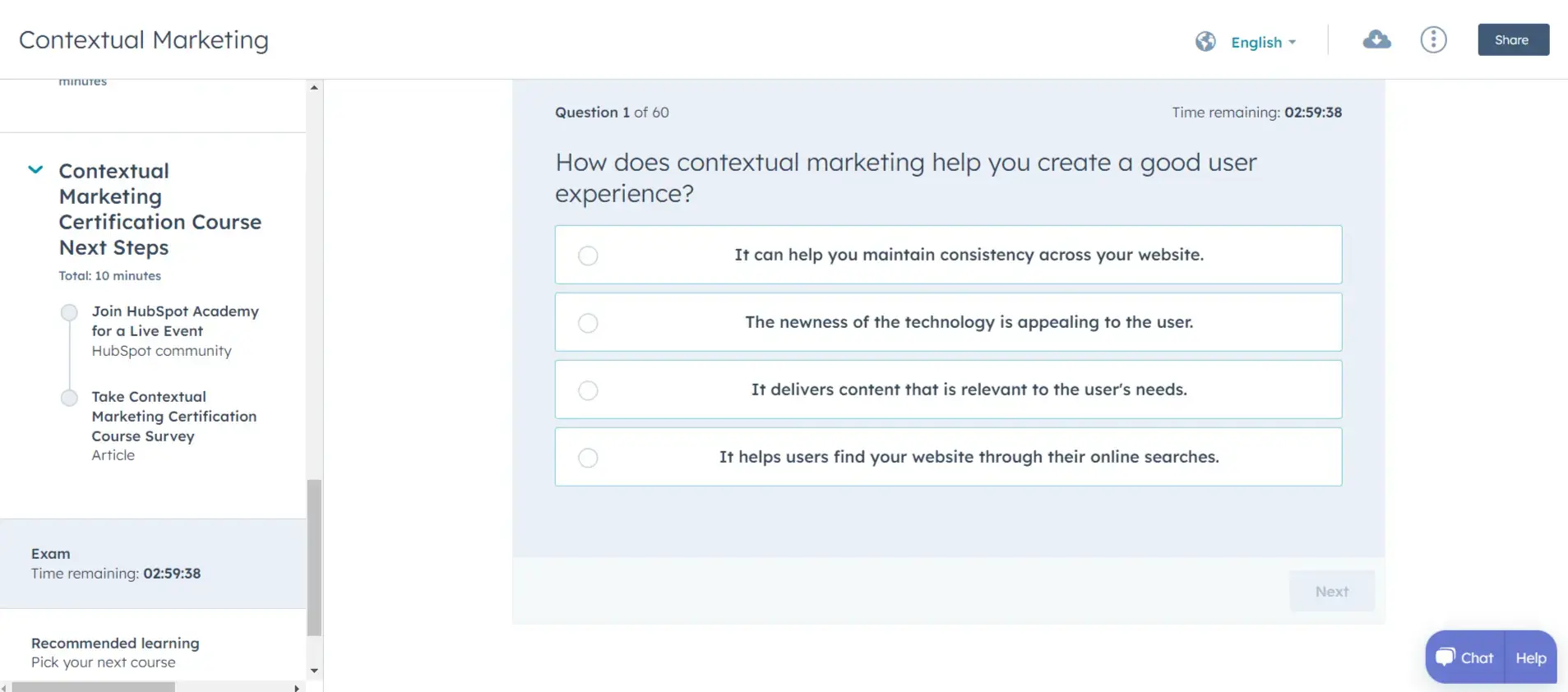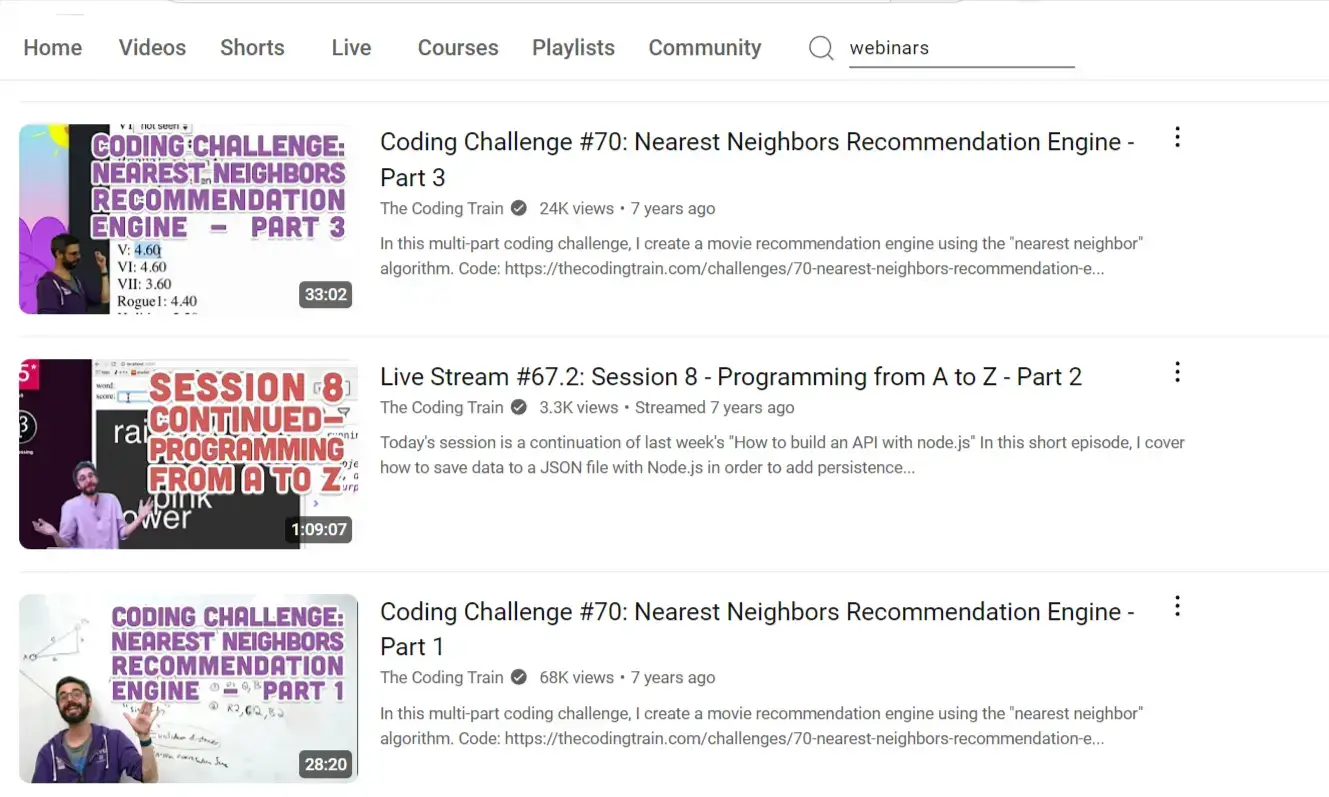Table of Contents
I’ve always created courses for self-paced learners. For me, it was mostly because students demanded it. Otherwise, 58% of employees prefer to study or train at their own pace.
But who exactly will find self-paced online courses helpful? And, how can you overcome its most pressing issues?
Whether you’re an experienced educator, a lifelong learner, or just curious about how self-paced education can evolve, in this article, we’ll be exploring the benefits and best practices for avoiding common challenges with this teaching and learning method.
Definition of Self-Paced Learning
Self-paced learning is a form of education where learners have the autonomy to progress through the course material at their own speed, without the constraints of a fixed schedule or deadlines set by an instructor. This learning method allows individuals to start and finish courses according to their schedules, making it a flexible and customizable learning approach.
Self-paced learning provides flexible timing as learners can access and complete the course material at any time. This makes it ideal for those with varying schedules or other commitments. Students can spend more time on challenging topics and less time on concepts they find easier, catering to their unique learning needs and pace. They’re also responsible for their progress and must be self-motivated to complete the course.
💁 Blended Learning: What it is: Why it Matters & How to Apply It
Compared to cohort-based learning strategies where students progress through the course together on a predetermined schedule, self-paced courses are available online, making them accessible from anywhere with an internet connection.
Self-paced learning also differs from traditional learning as classes aren’t held at specific time frames and don’t have an in-person instructor to set the pace.
The Benefits of Self-Paced Learning
The advantages of self-paced learning are numerous, such as providing access to custom learning paths and the flexibility to control pacing and scheduling.
It’s also better suited for diverse learning styles and people who need the ability to fit education into their busy schedules.
Some of the key advantages I’ve noticed with self-paced education include:
How Self-Paced Learning Works: 4 Formats to Consider
Self-paced learning comes in different formats that will better match certain learning objectives or styles. I chose the best types of content that will help you engage your learners and allow them to retain information in the long term.
Video Lessons
Interactive video lessons should vary in length and complexity, offering flexibility to learners of all kinds. They combine visual and audio elements to enhance understanding and are best for demonstrating procedures or processes, explaining complex concepts with visual aids, and supplementing reading materials with engaging content.
Example:
Matt Pocock is a master at using video tutorials to guide learners through complex TypeScript errors, offering step-by-step explanations and live coding examples. The instructor shows how to diagnose and resolve specific TypeScript errors, making the learning process dynamic and visually engaging.
This approach is used for both the instruction and exercise parts to help learners see the code in action and understand the practical application of the concepts. In addition to video content, the course also provides written explanations and transcripts of the video lessons.

Interactive Assessments
Assessments as part of coursework, can include quizzes, tests, and assignments designed to evaluate a learner’s understanding and retention of the material. The instant results help learners identify areas of improvement and can keep them on track and motivated to achieve learning goals.
Assessment can happen as a course progresses or at the end of a chapter/course if you want to offer certificates. Testing learner’s knowledge is needed to measure comprehension of key concepts and identify knowledge gaps. I’ve always used the later feedback to update the course in time or create new learning materials.
Example:
HubSpot’s certification process within its Academy is structured to ensure that students thoroughly understand the material before earning their certificate. To reinforce learning, HubSpot integrates quizzes at the end of each module. These quizzes test students on key concepts, helping them retain information and identify areas that need further review.
At the end of the course, HubSpot requires students to complete a final assessment, which often includes a comprehensive exam covering all the material from the course. You can create your own engaging and interactive assessments with LearnWorlds’ Assessment Builder.

Downloadable Resources
Downloadable resources include PDFs, worksheets, case studies, slides, podcasts, and other materials learners can download and even use offline (this is a big request you might get from a lot of students). This type of content is convenient and can provide a lasting resource for future reference—in case your website experiences technical problems or you take the course off for the time being. Use extra content to offer practice materials worksheets and exercises or supply templates and guides for practical application of the concepts in your videos/text content.
Example:
Learning Liaisons uses PDF files as a central resource in their training courses, providing learners with a range of supportive materials like blueprints, prompts, walkthroughs, and other essential resources. These PDFs provide detailed guides, blueprints, prompts, and walkthroughs that complement the video lessons and other interactive elements within the courses.

Webinars
Webinars are live or recorded online sessions that give you the chance to feature experts or interactive components such as Q&A sessions. They excel thanks to the real-time interaction they create with instructors as well as because of how the live sessions can be recorded for future reference. I recommend using webinars if you want to get into more detail about a topic, introduce new ideas and trends, or just provide a platform for discussion and interaction.
Example:
Daniel Shiffman at The Coding Train often conducts live coding sessions and interactive streams that function similarly to webinars. These live sessions allow viewers to watch real-time coding demonstrations, ask questions, and engage with the content dynamically. Shiffman’s live streams often include problem-solving exercises, coding challenges, and discussions, providing an interactive learning environment akin to webinars.

Who Can Benefit from Self-Paced Learning
Self-paced learning offers a flexible and personalized approach to education that can benefit a wide array of learners. This method allows individuals to progress through material at their own speed, accommodating their own schedules and different learning styles.
Below, I explore how various types of learners can benefit from self-paced learning.
Professionals
For those juggling career and personal commitments, self-paced learning provides the flexibility to study without disrupting their busy schedules. Professionals can take courses to enhance their skills, earn certifications, or pivot to new career paths, all while managing their existing job responsibilities.
Tip: Companies can implement self-paced learning programs to facilitate employee training and continuous employee development. This method is particularly effective for training in new technologies, compliance requirements, and soft skills. Employees will be able to learn at their own pace, ensuring better comprehension and retention.
Students
Self-paced learning can support students who need to balance academic work with extracurricular activities or part-time jobs. It allows them to catch up on subjects they find challenging or to accelerate in areas of strength. This flexibility can lead to a more personalized and effective educational experience.
Tip: Advanced learners often need to engage with complex material at a deeper level. Set up self-paced learning to enable them to allocate time according to the difficulty of the content and their research needs. This can foster a more thorough understanding of a topic.
Lifelong learners
Individuals pursuing education for personal enrichment rather than professional reasons can benefit greatly from self-paced learning. Whether learning a new language, exploring historical events, or mastering a musical instrument, these learners can enjoy the journey of education without the pressure of deadlines.
Tip: Focus on engagement and interaction. For course creators targeting lifelong learning, it’s essential to create content that actively involves learners. Use LMS tools like LearnWorlds that allow you to easily incorporate multimedia elements, interactive exercises, and opportunities for discussion or collaboration.
Common Challenges and How to Overcome Them (as Course Creator)
While self-paced learning offers numerous benefits, it also comes with its own set of challenges. These include issues like procrastination and lack of motivation that can, however, be mitigated for better knowledge retention.
Let’s explore how some of the key challenges of self-paced learning can be prevented or fixed.
Increased procrastination
One of the key challenges is the potential for procrastination, which can lead to incomplete or delayed assignments. To mitigate this, techniques such as the Pomodoro Technique or a rewards system can be implemented to enhance productivity and maintain momentum. These methods encourage focused work periods followed by breaks, helping students stay on track.
Social isolation
Another significant challenge is the limitation of social interaction and opportunities for networking, peer collaboration, and immediate feedback. To overcome this, arranging regular video calls or virtual study groups can foster collaboration, facilitate the exchange of ideas, and help students connect. This approach ensures that students don’t feel isolated and can benefit from collective learning experiences.
Tech issues
Technical problems, such as internet connectivity issues, software malfunctions, or hardware failures, are also common in online learning environments. To prevent these disruptions, students should regularly check and update their hardware and software. Additionally, having a backup plan integrated into the learning process is crucial to ensure continuity in case of technical difficulties.
Lack of Self-discipline
The self-discipline required for online learning can be daunting, as students must maintain strong motivation and time management skills. To support this, it’s important to establish short-term and long-term goals for learning objectives. Breaking these goals into manageable tasks and tracking progress regularly can help maintain motivation and ensure steady advancement.
💁 Microlearning can help. Find out what it involves here.
Lack of support
Lack of immediate support is another challenge that can hinder progress, especially for learners who need prompt clarification or assistance. Setting up periodic meetings where instructors can discuss students’ progress, along with providing online resources such as FAQs, tutorials, or community forums, can offer the necessary support and guidance.
Distractions
Distractions pose a significant risk to engagement in online courses, especially for learners who struggle with self-regulation. To counteract this, course design should include a mix of videos, readings, interactive exercises, and quizzes to keep the learning experience engaging and dynamic. Additionally, breaking larger tasks into smaller, achievable goals can maintain interest and provide a sense of accomplishment, keeping students motivated.
Inconsistent progress
Lastly, inconsistent progress can create difficulties in keeping up with course expectations or group assignments. To address this, students should be supported with tracking tools or journals, as well as periodic evaluations, to ensure they are meeting course requirements and can make necessary adjustments as needed.
Empower Your Learners With Self-Paced Learning
Platforms with advanced features, such as LearnWorlds, provide exceptional opportunities for instructors and learners alike. They enable instructors to interact with learners and facilitate peer-to-peer communication through online discussion boards, private or public groups, and a broader online learning community.
Move beyond the constraints of typical LMS platforms with LearnWorlds, which delivers a superior experience to scale your training program. Give LearnWorlds a spin and explore its awesome capabilities to help you address the challenges of self-paced learning.
Further reading you might find interesting:
FAQs
What is the difference between self-paced and self-directed learning?
Self-paced learning allows students to progress through pre-structured course material at their own speed, following a set sequence designed by an instructor or platform. In contrast, self-directed learning involves learners taking full responsibility for their educational journey, including setting their own goals, finding resources, and determining the structure and pace of their learning. While self-paced learning provides flexibility, self-directed learning requires autonomy and self-motivation as learners create and manage their learning.
What is an example of self-paced instruction?
Self-paced instruction comes in various forms, including ebooks, webinars, online learning platforms, video tutorials, mobile learning apps, and digital resource hubs. Learning management systems like LearnWorlds allow educators to create and distribute courses that students can complete on their own time. Instructors can upload videos, quizzes, assessments, and interactive content. Students can then access these resources whenever it’s convenient for them.
How to do self-paced learning?
Self-paced learning is based on a structured approach that relies on pre-set clear, achievable goals that define what students need to learn and by when. A variety of resources such as videos, articles, and interactive exercises are used to keep your learning engaging and dynamic. Extra tools like journals, checklists, or apps help learners track progress and instructors adjust their courses.

Alexandra Cote
Alexandra Cote is a SaaS growth marketer and online instructor who's worked with dozens of brands in the MarTech, HR tech, and productivity space. She's also a strong supporter of staying happy at work and choosing a healthy career path.

